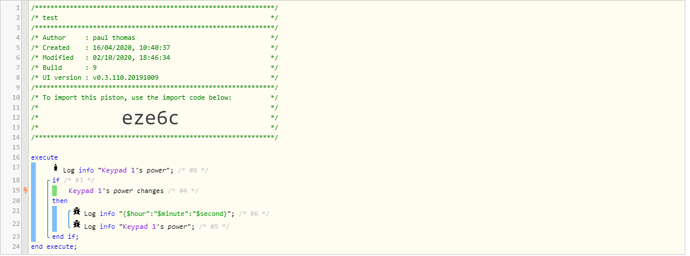I’ve got a few observations & a question about this setup.
I purchased a used Fibaro double switch 2 off ebay for use in my kitchen lights project. I’m only interested in the power monitoring on the switch so my piston can determine if the lights have been operated manually. As an aside, the lights are a futronix scene controller with an IR remote. A logitech hub sends IR to this via my lighting piston.
Observation 1
The fibaro must be factory reset if it hasn’t been removed from its previous hub, before you can add it to the new hub. The instructions to do this are not in the included booklet, but are available on fibaros web site. Its a bit tricky to do, but once done the switch added correctly using the new app.
Observation 2
Having added the switch, two devices are available “fibaro switch” and “fibaro switch - usb” corresponding to output 1 & 2 on the switch. When I tried to add these to webcore (via the new app) only the “fibaro switch -usb” showed up under switches. I found the other output under the power meters category and added it from there. I’ve written a test piston to confirm that webcore can switch correctly, and it does. So just wondering why the first switch is not shown when you try to add it.
Question
As I mentioned, I’m only using this switch to monitor the power used by the futronix. So when its turned on manually, the power rises and I can set the virtual switch to on. My question is around how often to sample the power usage. The fibaro can be configured for this, default is 3600s, but it can be lowered to a min of 1s. I need something responsive, but do not want to flood the network with power readings. I’m not sure if the fibaro would only report if the power changed, but guess it could vary anyway. i.e it samples every n secs, but only sends an update if the value has changed from the previous reading.
I’ve noticed my existing samsung switches send very numerous power messages, so wonder if I’m just over thinking and should set the fibaro to 1s?


